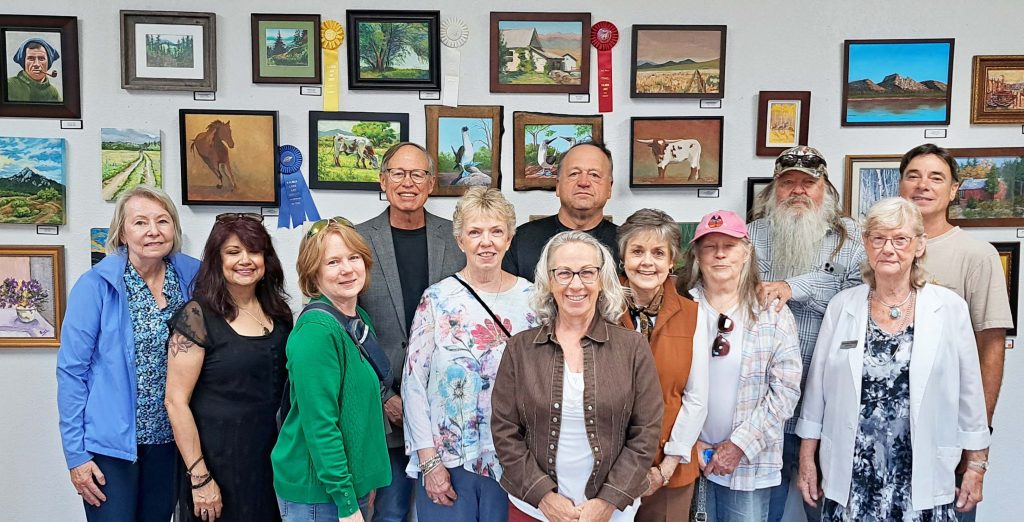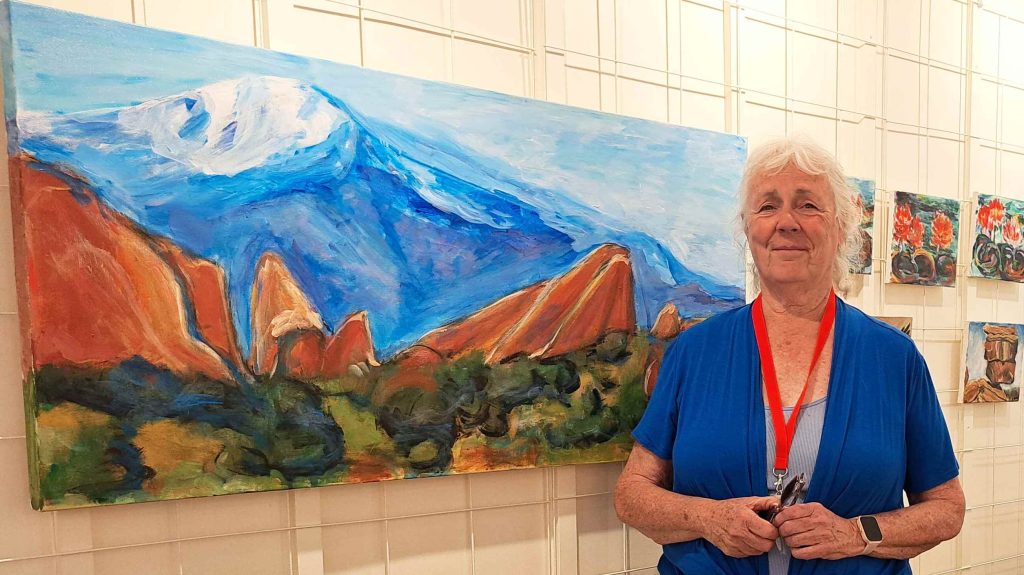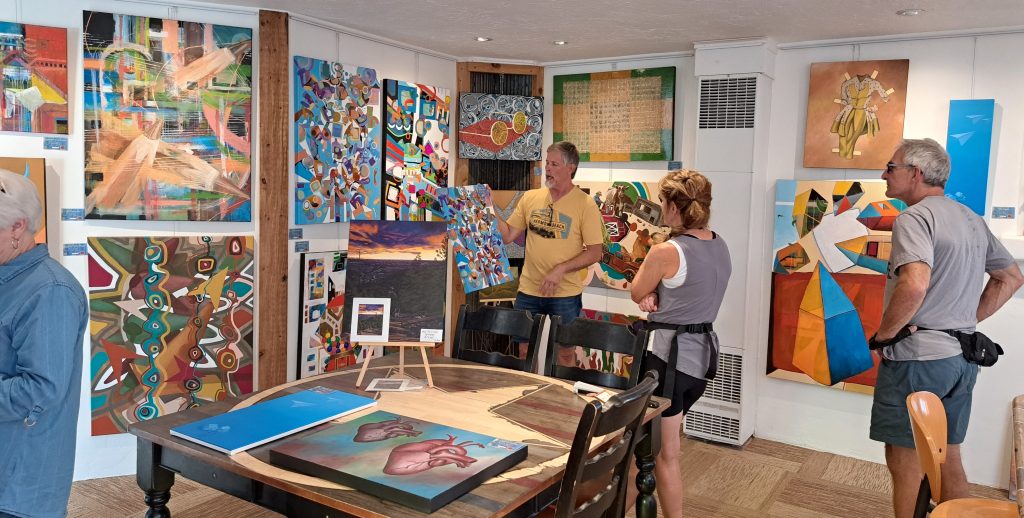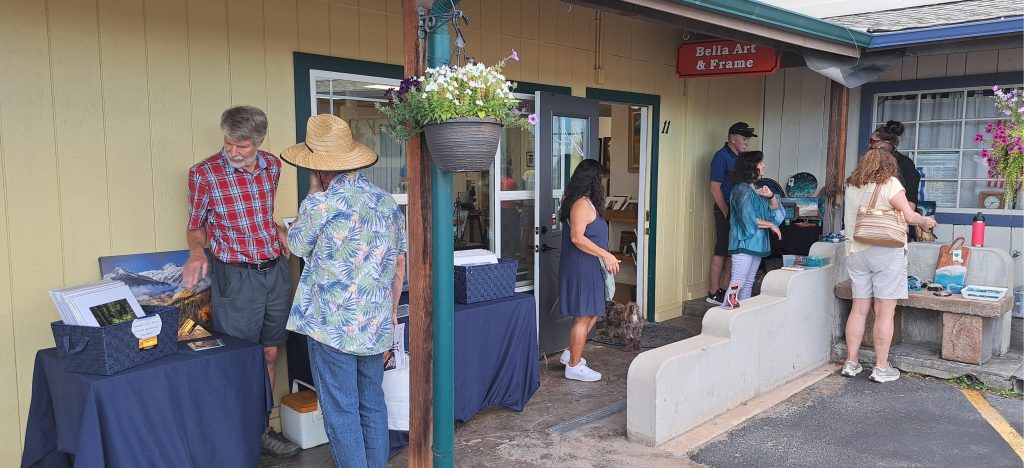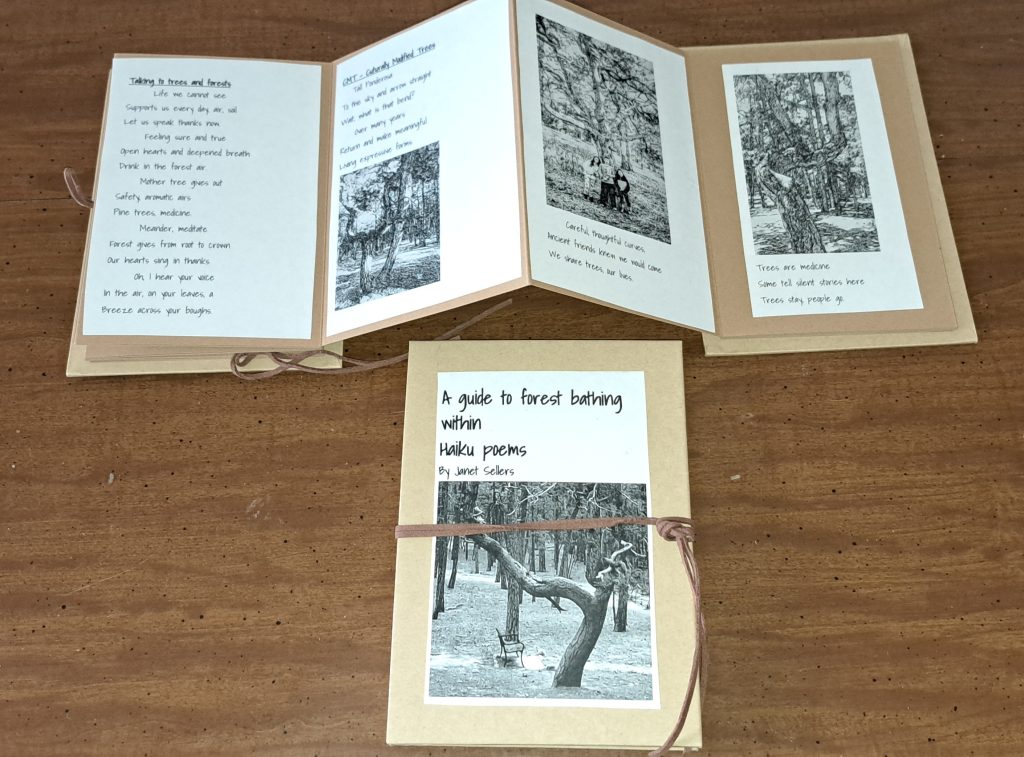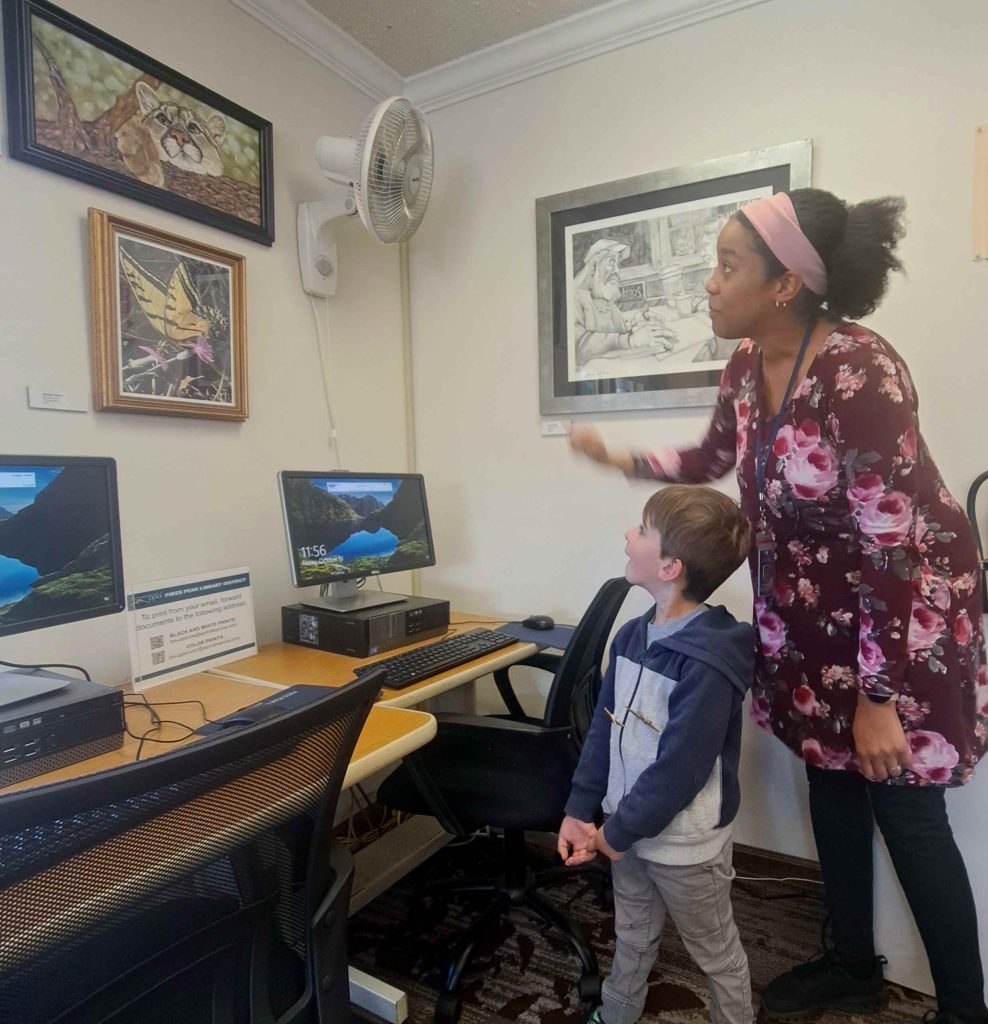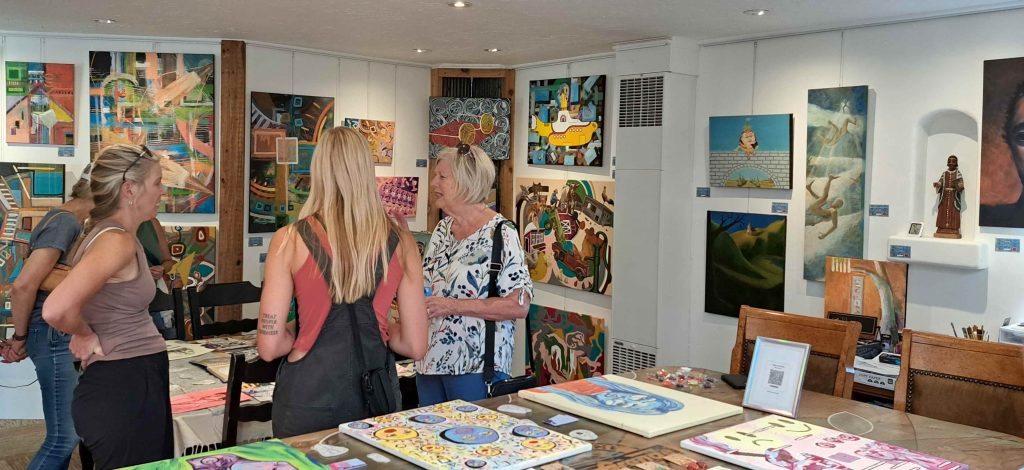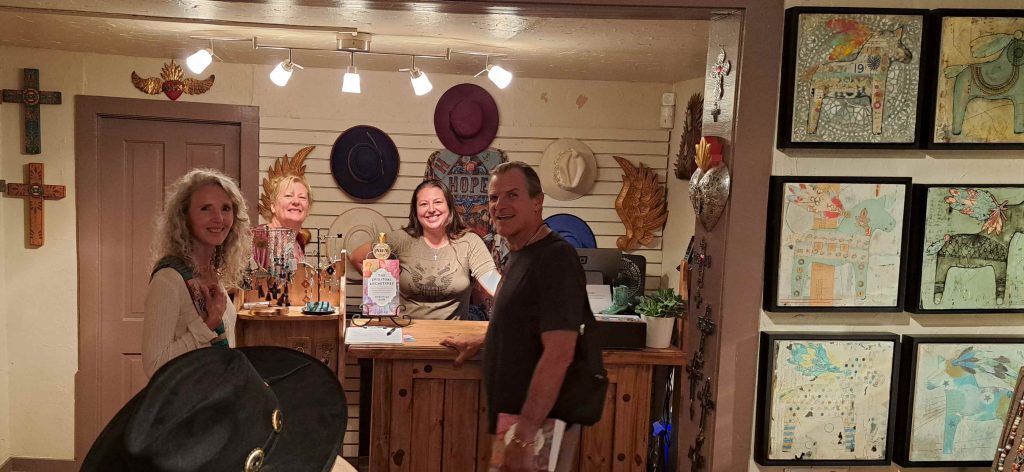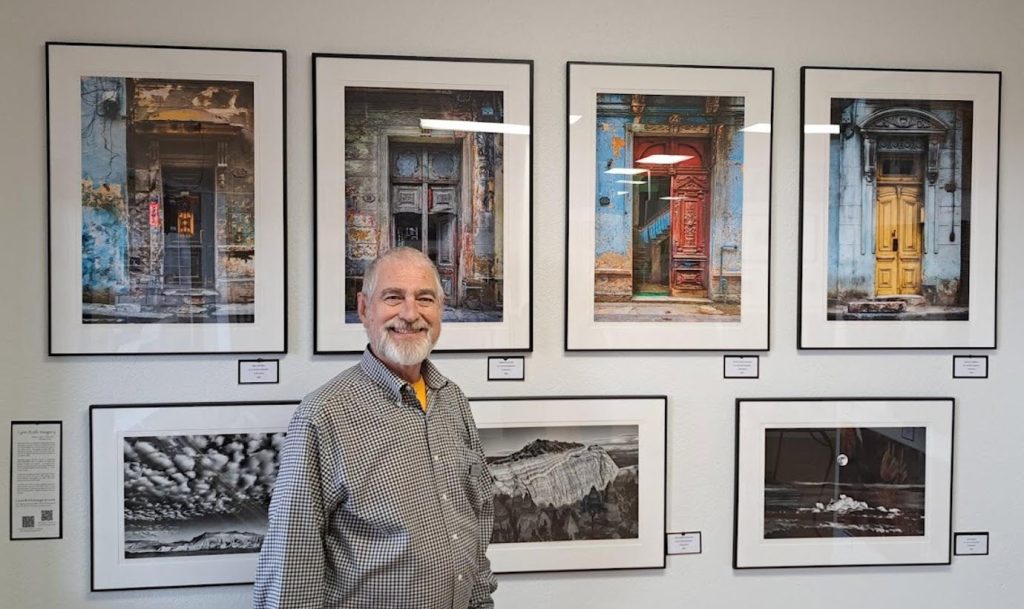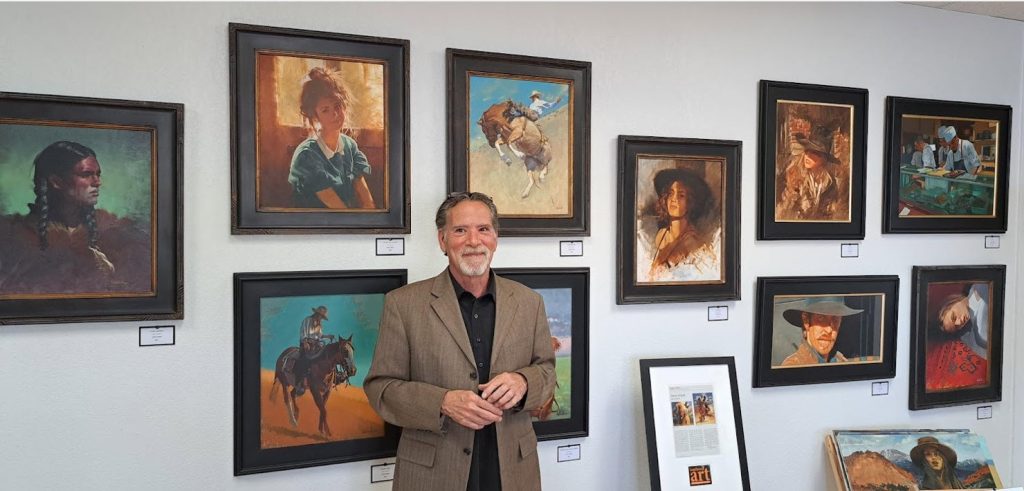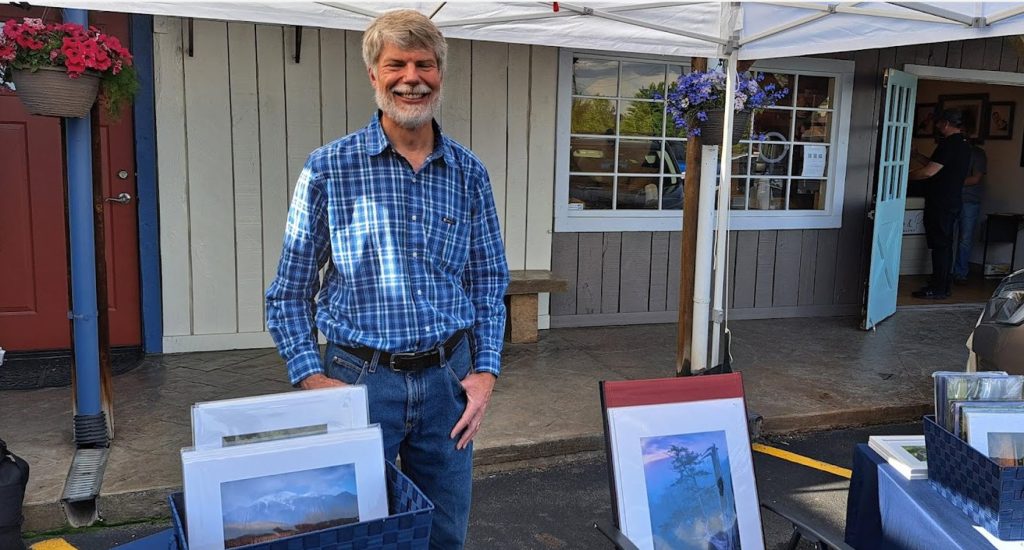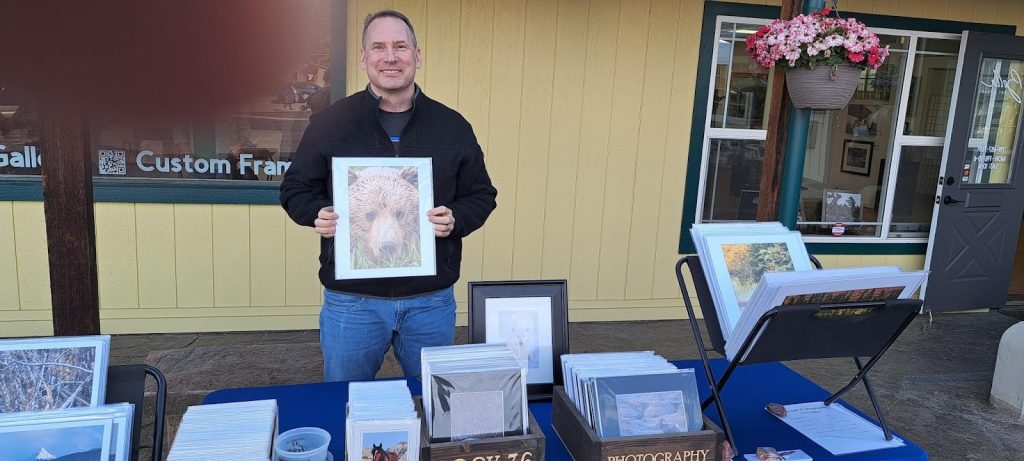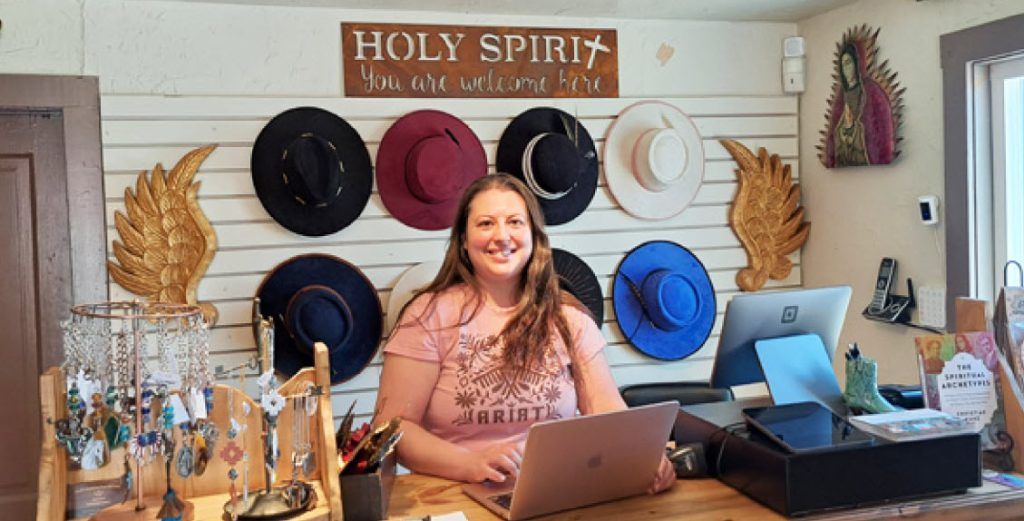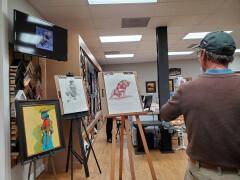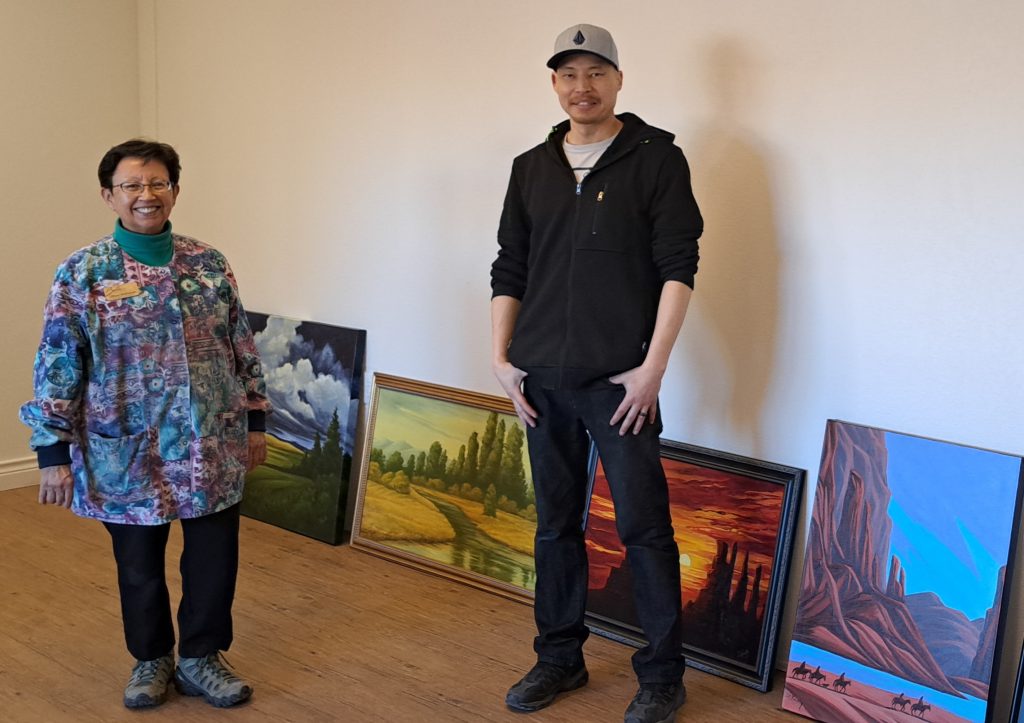By Janet Sellers
Public art creates stronger communities and can even help save lives.
Our local monthly Art Hop gives us the chance to make our community a fun place to live and connect with neighbors and visitors. On the fourth Friday of the month, 5-7 p.m., May through September, our Art Hop is a time to be in town and mingle with friends and visitors for hours of art and refreshment. Besides the sculpture park seen from Second Street, there are always numerous sculptures around town at the Monument Town Hall, along Beacon Lite Road and along the Santa Fe Trail and many other places in town. These are visible all the time, too.
Art in public places fosters connection, shared identity, and dialogue, turning spaces into gathering points. It can reduce isolation, inspire hope, and spark critical conversations about social issues. By humanizing environments and promoting inclusion, public art can strengthen communities, improve mental health, and even help prevent violence or despair.
Through art in public places, the way-faring and calming effects of having public art offer intriguing, powerful impacts for public safety and pride of place, especially in placemaking. Art in Public Places is a moniker for artworks available for the public to view outdoors or indoors. These often show diversity in style, imagery, materials, and techniques. Art in Public Places as a genre has a goal to merge the art experience into public spaces.
The art in public places’ official source for the Town of Monument is known as ArtSites, and we can download a phone application that informs about each artwork. The app is called Otocast and in the narrated audio guide, each artist tells in their own words about their artwork: https://app.otocast.com/guide/MonumentCO_ArtSites.
The ArtSites for the Town of Monument makes a call for artists each year, and a jury decides on the winners to be exhibited that year throughout the area. This year in June, new sculptures were installed and can be seen at the Monument Town Hall, along the Santa Fe Trail route as well as in the Sculpture Park lawns at Second and Jefferson Streets.
Many states, counties, cities, and towns mandate capital construction and renovation funds, usually 1% of those funds. For example, in Colorado, the “1% for Art” program, officially the Art in Public Places program, allocates 1% of state capital construction funds for new or renovated state buildings toward the acquisition of public art. This program, administered by Colorado Creative Industries, ensures that public spaces are enhanced with art and aims to support artists and enrich communities. Denver, Boulder and other cities also have their own “1% for Art” programs, which dedicate a portion of city-funded capital improvement projects to public art.
The benefits of the state and local programs provide access to art for all, activate public spaces, grow civic pride, and support artists, especially local artists. Art in public places offers a human scale to larger spaces, invites experiences and interactivity for people walking, illustrates or reflects a story or history of the place, and improves wayfinding. The qr code shown here goes to the link for Otocast and the stories of the artworks narrated by the artists themselves.
Janet Sellers is an artist, writer and speaker, offering talks, workshops, and art in public places for Colorado museums and communities. Contact Janet at JanetSellers@OCN.me.
Other Art Matters articles
- Art Matters – The many benefits of outdoor art and arts events (7/3/2025)
- Art Matters – On being a sketchy person in the art and cultural sector (6/7/2025)
- Art Matters – May Art Hop and art on the street (5/3/2025)
- Art Matters – Contemporary art: The return of bold beauty (4/5/2025)
- Art Matters – Amateur: art just for the love of it (3/1/2025)
- Art Matters – The arts as medicine; Palmer Lake Art Group plans new venues (2/1/2025)
- Art Matters – Art, energy sites, and hugging hormone (1/4/2025)
- Art Matters – How does art make people feel good? (12/5/2024)
- Art Matters – It’s not just decor: Art creates a space and creates our sense of place (11/2/2024)
- Art Matters – October is Arts Month, aka Artober (10/5/2024)

